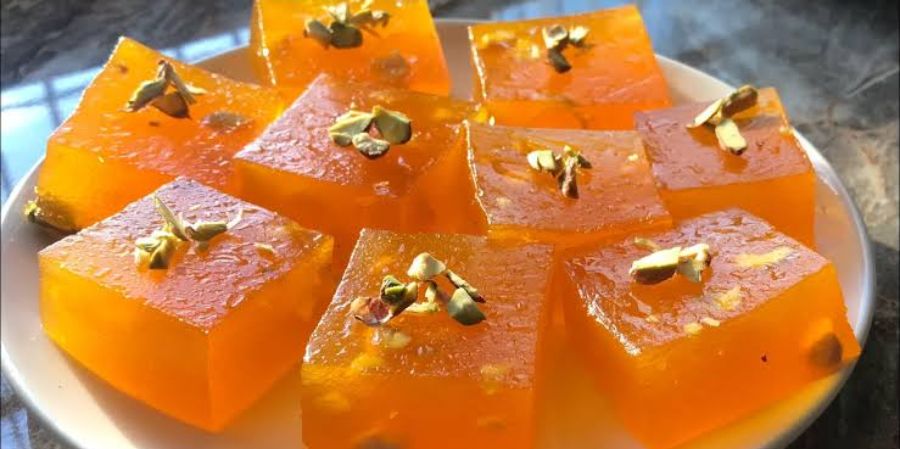

Halva (also known as halvah, halwa, and other spellings) is a confection that originated in Persia and is widely distributed throughout the Middle East. The name is used for a variety of recipes, usually a thick paste made of flour, semolina, or seeds or finely ground nuts (such as sesame or sunflower seeds) and sweetened with sugar or honey.
Region or State
South Asia, Central Asia, Middle East, Balkans, Caucasus, North Africa, Horn of Africa
Halva is common in West, Central and South Asia, Balkans, Caucasus, Eastern Europe, North Africa and Horn of Africa. Halva can be stored at room temperature during the non-summer months with little risk of spoilage.
Etymology
Halwa is of Persian origin (now Iran). A mention of halvah appeared in the 7th century, referring to a mixture of pureed dates with milk. By the 9th century, the term had been applied to a variety of sweets, including sweetened cooked tapioca or dough.
Many earlier Persian recipes were recorded in the 13th-century Arabic book Kitab al-Tabikh (Book of Dishes), as well as in an anonymous cookbook from Spain 13th century Moorish house. Halva was adopted by the Ottoman Turks, including a sesame-based version, and spread throughout their empire.
Varieties
Most halva are relatively concentrated confectionery sweetened with sugar or honey. However, their textures are different. For example, the texture of halva made from semolina might look like butter, slurry, slurry into something viscous and translucent, while halva made from sesame is drier and crumbly.
Turkish a helvası, wheat halva
Grain halva is prepared by baking flour or cornstarch in oil, mixing it with roux, and then cooking it with syrup. sweet. Corn is rarely used.
Sesame-based dishes include suji ka halwa (sooji sheera, rawa sheera) in India and irmik helvası in Turkey. Bang dough is first roasted in fat, oil or butter, then water or milk and sugar are added as desired to create a preferred flavor and consistency.
Halva made from rice flour made from milk, called Pathein halawa, is considered a delicious Burmese dish originating from the city of Pathein.
Sesame
Sesame halva is common in the Balkans, Poland, the Middle East and other areas around the Mediterranean Sea. The main ingredients of this cake are butter or sesame paste (tahini) and sugar, glucose or honey. Soap, egg whites or marshmallow root are added in some recipes to stabilize the oil in the mix or give the results a special texture. confectionery. Other ingredients.
❣Thank You✨…










